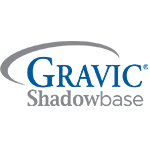
The HPE Shadowbase Essentials software bundle provides a diverse set of data management solutions to manage, monitor, and control Shadowbase environments.

Data is at the heart of every organization. Data replication, an essential need of the organization, is at the center of the HPE Shadowbase product portfolio. It is important to manage, monitor, and transform data in order to:
- maintain a working replication environment,
- ensure everything is running properly,
- to more easily and quickly share data across the enterprise,
- and create new business opportunities and value-add services.

There are two Shadowbase audit compliance utilities in the bundle: Shadowbase Audit Log (SAL) creates an archive of HPE NonStop application transactions in a query-able database. This historical database is searchable, and stores the history of INSERTs, UPDATEs, and DELETEs for reporting, validating, and auditing an application’s change data.

Shadowbase Audit Reader (SAR) provides a way to filter and analyze HPE NonStop TMF audit trails. Using an SQL-like query syntax, it shows the individual I/O changes of what the application transactions did, when they did them, and to what files and tables. It enables holistic investigating and reporting into how and when an audited database has been changed.

Shadowbase Data Definition Language Utility (SBDDLUTL) converts and maps Enscribe records and fields into their equivalent SQL tables and columns.

It produces the CREATE TABLE statement syntax for the target SQL environment and simplifies transforming NonStop Enscribe files into any of the SQL target table schemas that Shadowbase software supports.

Shadowbase SQL/MP Schema Conversion Utility (SBCREATP) converts and maps HPE NonStop SQL/MP table schema into a target SQL environment.

It also produces an editable CREATE TABLE statement for the selected target SQL environment, for example when replicating SQL/MP database changes into an Oracle target table.

Both SBDDLUTL and SBCREATP are key utilities for data integration, and both support a variety of target SQL databases, including:
- HPE NonStop SQL/MP,
- HPE NonStop SQL/MX,
- Oracle® Enterprise,
- Microsoft® SQL Server®,
- IBM Db2®,
- Oracle® MySQL,
- SAP® HANA,
- PostgreSQL,
- and SAP® Sybase®.
Without these utilities, the DDL table and schema conversion work has to be done manually, which is a time-consuming and error-prone process.

Shadowbase UNDO and REDO can selectively roll audited Enscribe, SQL/MP, and SQL/MX HPE NonStop database changes backward and forward while the application remains online and processing user requests. This capability is useful, for example, when an errant version of a new program was deployed, but corrupted only part of the application database.

These utilities can remove a set of changes, and then reapply only valid database changes, restoring a corrupted database to a known, consistent, and correct state while the database can stay online for application processing. These actions avoid the need to take an application outage to recover the corrupted file or table from a tape/virtual tape backup or online dump.

Shadowbase DDL Command Replication (DCR) automatically replicates and applies SQL/MP SQLCI source commands to a target database, ensuring the source and target database table structures remain in a consistent state. It automatically adjusts the source command to match the target environment’s details, such as file and table name mapping.

These SQLCI DDL commands integrate with Shadowbase real-time change data capture replication, allowing for the DDL commands to properly integrate with data replication activity. It is particularly helpful to customers migrating from an HPE RDF SDR product environment to Shadowbase replication.

Shadowbase Extract, Transform, and Load Toolkit (ETL) extracts database changes or initial load data into flat files. It can run while either the source or target remains open for read/write activity as the load or unload occurs.

Then, these flat files can be loaded into a target environment, such as a data warehouse using comma-separated value, or CSV, fixed-position, tab-delimited, and variable length formats. Therefore, the Shadowbase ETL Toolkit can be used to format and replicate data into most target environments that accept a flat-file input format, regardless if Shadowbase software directly supports that target.

Shadowbase Map (SBMAP) implements a data mapping and transformation stream between a source and target database and/or application.

By using its flexible and powerful scripting language, the user can quickly and easily define data transformation, cleansing, and filtering rules for the data being replicated. It eliminates the need to write C, C++, or COBOL code to implement custom Shadowbase User Exits. It is a “must-have” utility for data integration replication environments.

The HPE Shadowbase Essentials software bundle is sold separately as an add-on to the main Shadowbase change data capture replication engine. We are constantly adding new tools and utilities to this bundle, so check back often.

Please visit our website for more details. Contact us today and learn how Shadowbase Essentials can benefit you!
Hewlett Packard Enterprise globally sells and supports Shadowbase solutions under the name HPE Shadowbase. For more information, please contact your local HPE Shadowbase representative or visit our website. For additional information, please view our Shadowbase solution videos: https://vimeo.com/shadowbasesoftware.
Specifications are subject to change without notice. Trademarks mentioned are the property of their respective owners. Copyright 2022.


Be the first to comment